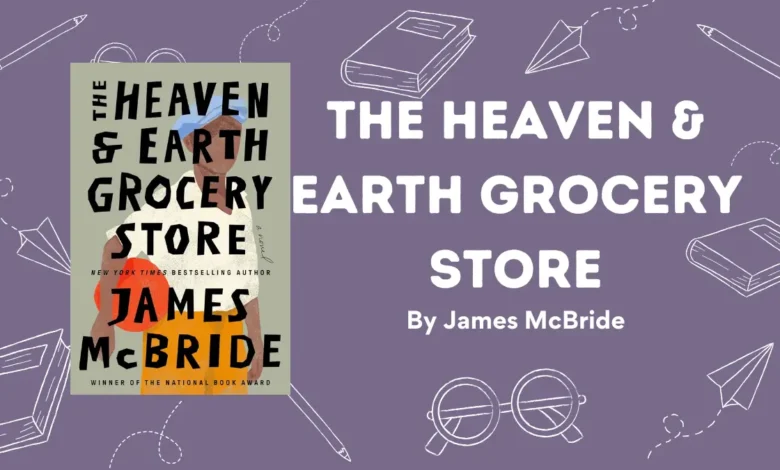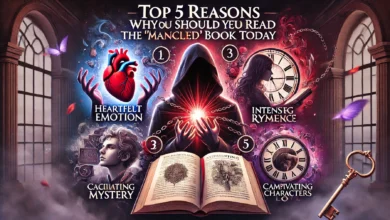Book Summary: The Heaven & Earth Grocery Store

Introduction
Imagine a small, bustling grocery store where secrets and untold stories linger in every corner. The Heaven & Earth Grocery Store is much more than a place to buy food—it’s a microcosm of life, packed with complex characters and rich narratives that explore the very fabric of humanity. But beyond its charm, the book tackles some of the most profound and challenging issues we face: social injustice, the divisions within communities, and the power of human connection in a fractured world. How do we, as individuals and societies, navigate these challenges? Can redemption and healing ever truly be possible?
In this summary, I will guide you through the layers of this thought-provoking novel, breaking down its plot, characters, and themes, and offering insight into why it resonates so deeply with readers. Whether you’re a fan of gripping stories or thoughtful social commentary, The Heaven & Earth Grocery Store offers something for everyone.
Plot Summary
Set in a small, diverse town, The Heaven & Earth Grocery Store revolves around a humble grocery store, which serves as the heartbeat of the community. This store isn’t just a place to buy food—it holds the memories, dreams, and struggles of its customers, many of whom have deep, interconnected stories.
The novel introduces us to the central character, a young woman named Zara, who returns to her hometown after years away. The store is still in business, run by the elderly Mr. Larkin, who has seen everything but never shares his secrets. Zara is confronted by a community at odds with itself—old friendships have soured, families have split, and there are unspoken tensions that everyone tries to avoid. As Zara works at the store and gets to know the townsfolk, she uncovers hidden truths that reveal the larger social fractures that have shaped their lives.
Through Zara’s interactions with the people of the town, we also learn about the lives of other significant characters, such as Charlie, a war veteran haunted by his past; Maggie, a young woman trying to escape a cycle of poverty; and Amir, a local entrepreneur whose wealth hides a lifetime of struggles.
As the story unfolds, the grocery store itself becomes a symbol of both hope and despair—a place where people come together but also where their differences are starkly exposed.
Themes and Messages
One of the most prominent themes in The Heaven & Earth Grocery Store is community. The novel emphasizes the importance of human connection, showing how people can support or harm each other, often without realizing it. The store serves as a microcosm of society, reflecting the beauty and fragility of community life.
Another major theme is survival. Many of the characters are grappling with personal or societal challenges, from poverty and systemic oppression to emotional trauma and moral dilemmas. Their fight for survival—whether physical, emotional, or social—is central to the story, and each character must find their own way to cope and endure.
The book also tackles social inequality, particularly the divide between the wealthy and the poor, and the systemic issues that perpetuate this divide. The Heaven & Earth Grocery Store doesn’t shy away from portraying the painful realities of racism, class struggles, and social injustice, but it also offers a glimmer of hope through the potential for redemption, healing, and understanding.
Character Development
The strength of The Heaven & Earth Grocery Store lies in its richly developed characters. Each character is a study in growth, with their personal journeys intertwining with the broader narrative of the town’s evolution.
Zara, the protagonist, undergoes the most profound transformation. Initially, she is an outsider, returning to a community she left behind. As she reconnects with old acquaintances and learns about the hidden lives of the townsfolk, she grows into a figure of empathy and strength, learning the value of understanding over judgment.
Other characters, like Charlie, also experience powerful growth. Charlie’s arc, in particular, showcases the complexity of dealing with trauma and the way in which the past can haunt a person even while they try to move forward. His journey is one of self-acceptance and confronting the ghosts of his past.
Maggie and Amir, too, show significant evolution. Maggie’s struggle to break free from her circumstances offers a poignant commentary on the cyclical nature of poverty, while Amir’s attempts to reconcile his wealth with his moral compass create tension and force him to examine the true meaning of success.
Symbolism and Imagery
The grocery store itself is a powerful symbol throughout the book. It represents not just the physical space where people gather, but the deeper emotional and social spaces they inhabit. The store is a place of both nourishment and scarcity, a setting where characters either find comfort or face the harshness of their realities. The items on the shelves—many of which hold personal significance—become metaphors for the characters’ desires, fears, and dreams.
The novel is also rich in imagery that enhances its emotional impact. The imagery of a community that is both fragmented and united, the contrasting landscapes of wealth and poverty, and the recurring motifs of food and sustenance all weave together to amplify the book’s central themes.
Writing Style and Structure
The author’s writing style in The Heaven & Earth Grocery Store is both evocative and intimate. The pacing is deliberate, allowing readers to fully immerse themselves in the world of the town and its people. The narrative tone is reflective, with a focus on the inner lives of the characters, but there is also a sense of urgency that propels the plot forward.
The structure of the book, with its alternating perspectives and non-linear timeline, adds layers of complexity to the story. Flashbacks and shifting points of view give readers insight into the characters’ pasts, while also building tension and suspense.
Critique and Evaluation
The Heaven & Earth Grocery Store is a deeply moving novel with a powerful message. The richness of its character development, the depth of its themes, and the compelling symbolism all make it a standout in contemporary literature. The novel’s ability to intertwine personal stories with larger societal issues is one of its greatest strengths, and it offers readers both emotional and intellectual satisfaction.
However, the book may be a bit slow for some readers. Its focus on character introspection and societal critique can at times overshadow the plot, making it a more reflective than action-driven story. Some may also find the narrative style a bit challenging, given its non-linear structure and multiple viewpoints.
Conclusion
In conclusion, The Heaven & Earth Grocery Store is an emotionally rich and thought-provoking novel that touches on universal themes of community, survival, and social justice. Its well-developed characters and poignant exploration of human connection make it a rewarding read for anyone interested in stories that explore the complexities of modern life.
While the book may be slow-paced at times, its depth and emotional resonance make it well worth the read. I highly recommend it to anyone looking for a novel that combines heartfelt storytelling with meaningful social commentary.




